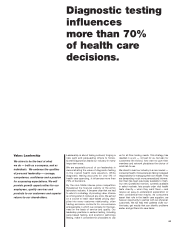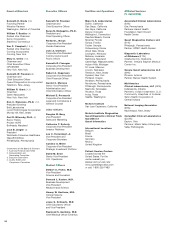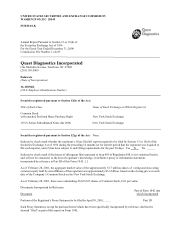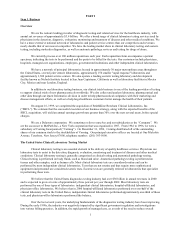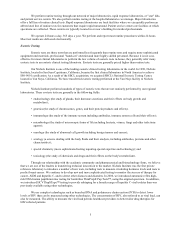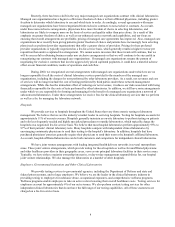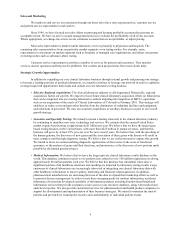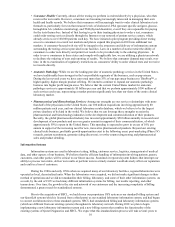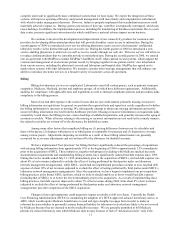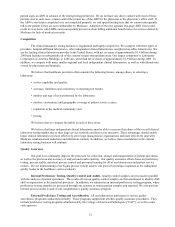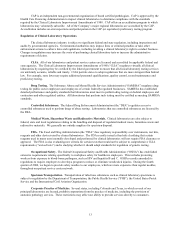Quest Diagnostics 2000 Annual Report Download - page 24
Download and view the complete annual report
Please find page 24 of the 2000 Quest Diagnostics annual report below. You can navigate through the pages in the report by either clicking on the pages listed below, or by using the keyword search tool below to find specific information within the annual report.4
were finalized in conjunction with the preparation of our quarterly report on Form 10-Q for the fiscal quarter ended
September 30, 2000.
We expect to continue to realize significant benefits from combining our existing laboratory network with that
of SBCL. As part of an integration plan finalized at the end of 1999, we are in the process of reducing redundant facilities
and infrastructure and redirecting testing volume to provide more local testing and improve customer service. We do not
intend to abandon any geographic areas. As of December 31, 2000, we had completed the transition of approximately
85% of our business affected by integration throughout our national laboratory network. We expect the transition of the
remaining business affected by integration will be substantially completed early in the second quarter of 2001. Other
integration activities, including standardization of information systems, will continue beyond 2001. Overall, given the
large size of SBCL's operations and the complexity of the clinical laboratory testing business, we expect that the
integration process may not be fully completed until 2003.
During and after the integration process, we are committed to providing the highest levels of customer service.
Through a corporate project office, we track and monitor key service and quality metrics and slow down the integration
process in the event that we experience significant declines in these metrics. We have not experienced any significant
service disruptions to date. However, the integration process requires the dedication of significant management resources,
which may cause an interruption of or deterioration in our services, which could result in a loss of momentum in the
activities of our business. Since most of our clinical laboratory testing is performed under arrangements that are
terminable at will or on short notice, any interruption of or deterioration in our services may also result in a customer’s
decision to stop using us for clinical laboratory testing. These events could have a material adverse impact on our
business. However, management believes that the successful implementation of the SBCL integration plan and our value
proposition based on expanded patient access, our broad testing capabilities and most importantly, the quality of the
services we provide, will mitigate customer attrition.
While we expect to realize a number of significant benefits from the acquisition of SBCL, we also expect to
incur a number of costs as a result of the integration process. Overall, we expect that the integration will result in
approximately $150 million in annual synergies, to be achieved over the next several years. During 2000, we estimated
that we achieved approximately $50 million of these synergies. However, we cannot assure investors that we will
continue to realize these synergies or that we will realize any of the additional anticipated benefits, either at all or in a
timely manner, or that we will not incur significant additional costs during the integration process.
Our Services
Our laboratory testing business consists of routine testing, esoteric testing, and clinical trials testing. Routine
testing generates approximately 83% of our net revenues, esoteric testing generates approximately 12% of our net
revenues and clinical trials testing generates less than 3% of our net revenues. We derive the balance of our net revenues
primarily from the manufacture and sale of diagnostic test systems, and from fees charged to customers, such as managed
care organizations and pharmaceutical companies, for information products derived from clinical laboratory data. We
derive approximately 2% of our net revenues from foreign operations.
Routine Testing
Routine tests measure various important bodily health parameters such as the functions of the kidney, heart,
liver, thyroid and other organs. Commonly ordered tests include:
• blood cholesterol level tests;
• complete blood cell counts;
• pap smears;
• HIV-related tests;
• urinalyses;
• pregnancy and other prenatal tests; and
• alcohol and other substance-abuse tests.





